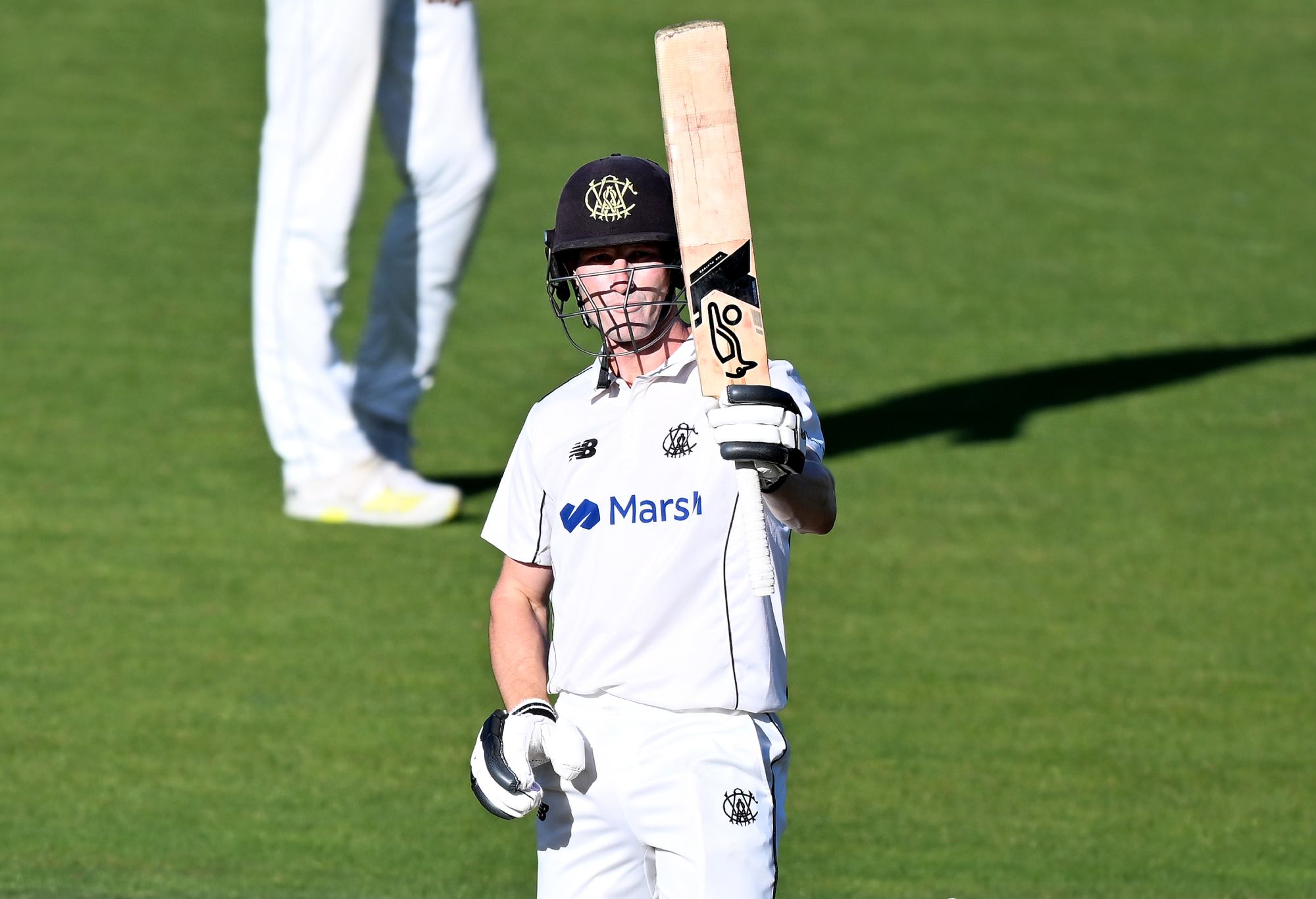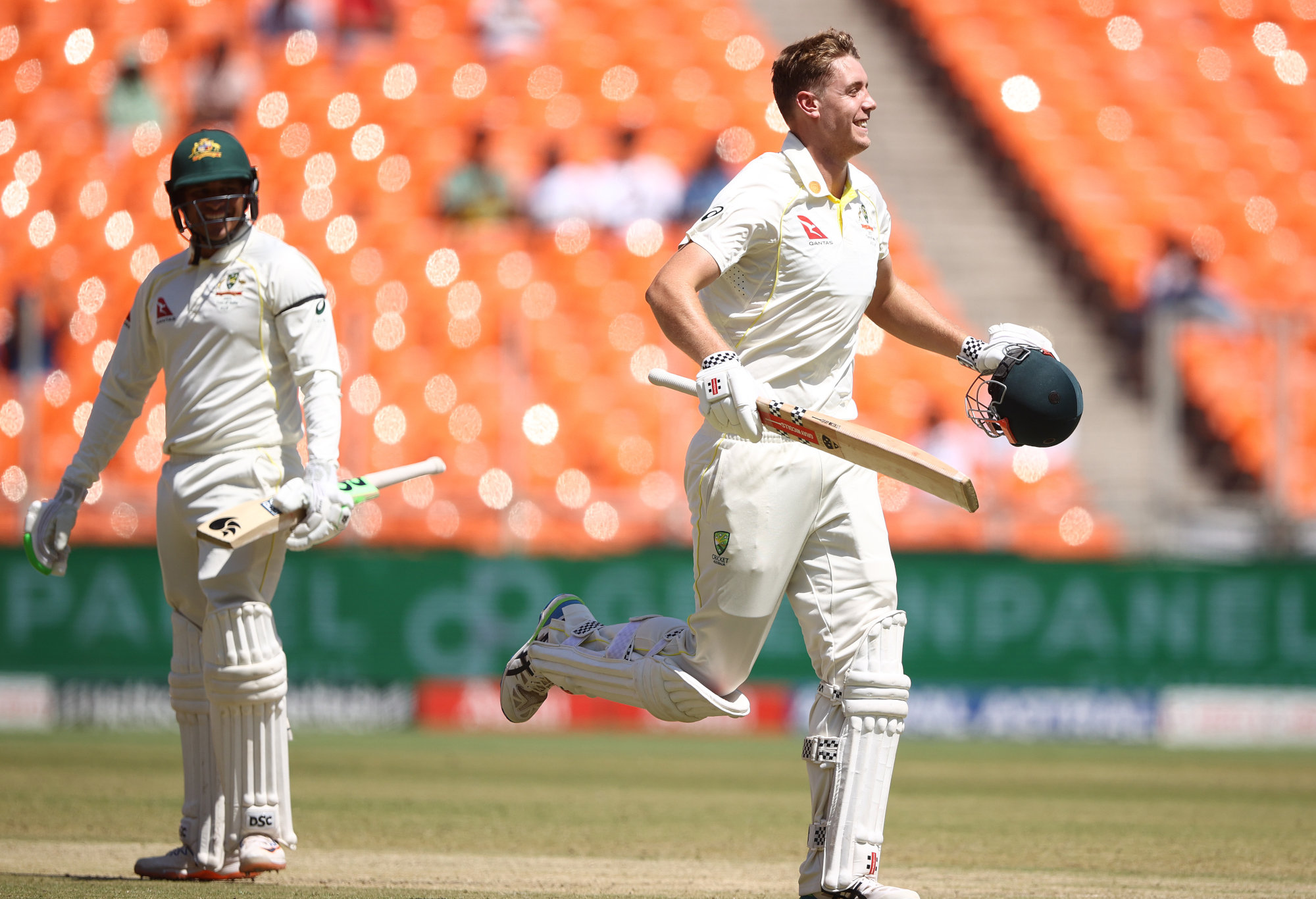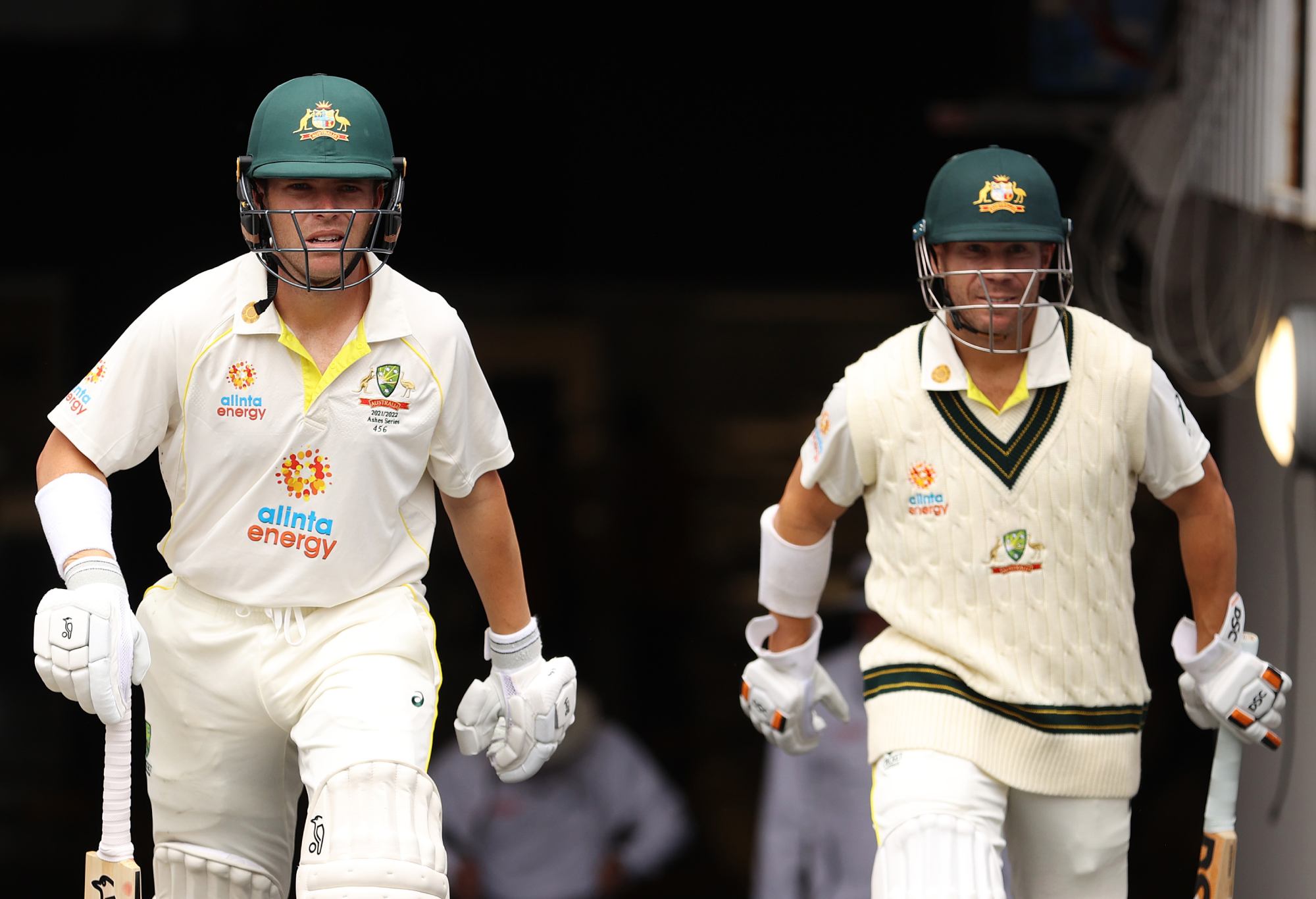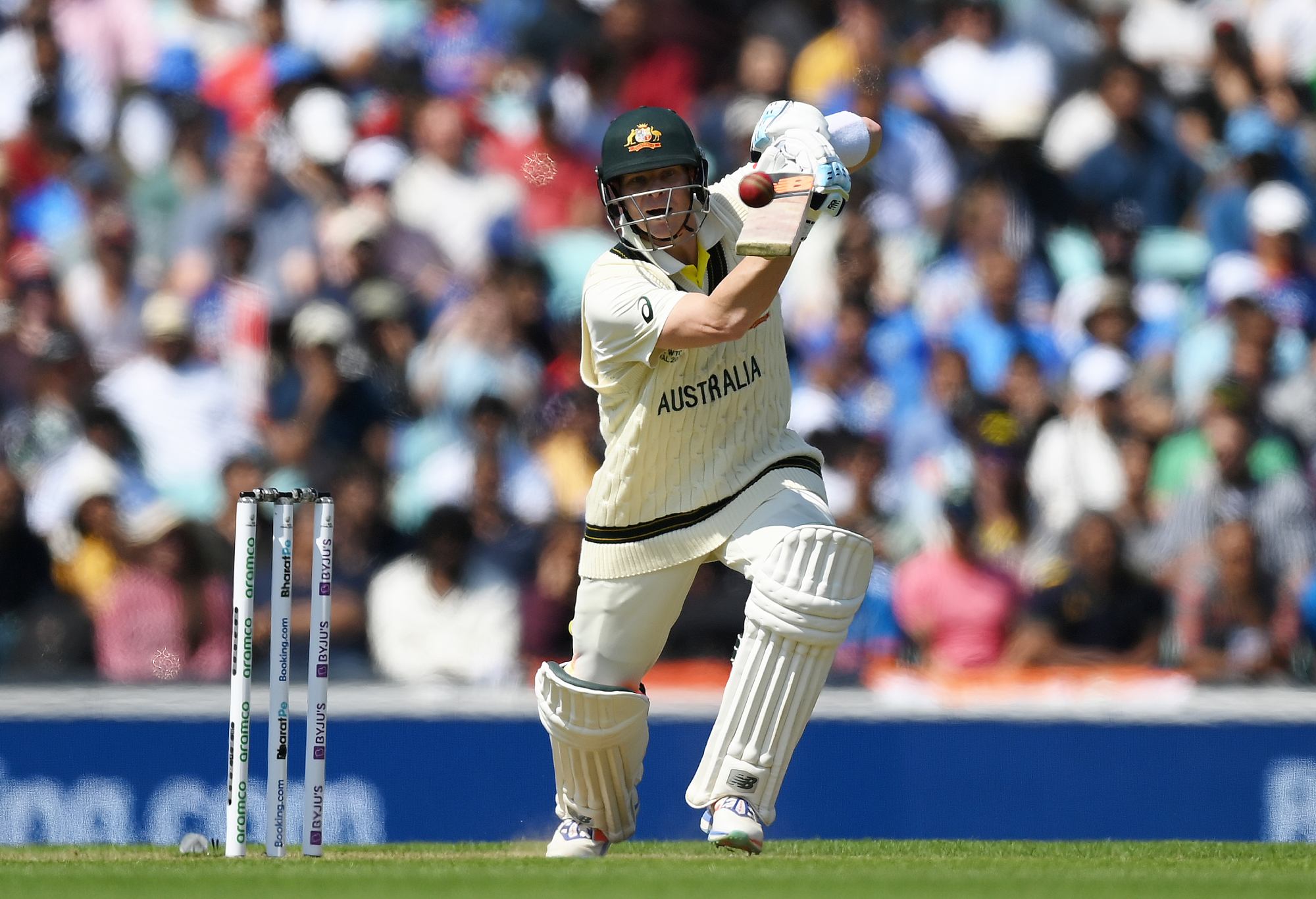Not since the mad scramble to find a wicketkeeper on the eve of the 2017/18 Ashes has Australia faced a selection conundrum like it faces now to replace David Warner.
For all the criticism of the veteran’s mediocre returns in recent years, as well as his patchy record on the road, finding an opener who can score quickly, make stacks of runs and annoy a lot of people in the process promises to be an impossible task.
So naturally, compromises will need to be made: whether it’s to pick a specialist opener with flaws like Cameron Bancroft, Matt Renshaw or Marcus Harris, squeeze Cameron Green back into the Test team in the one spot available and make it work; or – the most recent option to be floated – shift Steve Smith to the top of the order and trust him to get the job done.
Here is every option to replace Warner at the top of the order for the West Indies series… from best to worst.
1. Cameron Bancroft
PROS: If first-class form matters at all, the Western Australian should be pencilled in for the first crack at Warner’s job in Adelaide.
Bancroft has 512 runs at 57 including two centuries and three 50s for the season so far, plus 53 against the touring Pakistanis; while he was nearly 300 runs clear atop the charts for the 2022/23 Shield season as well, averaging 59 and hitting four tons.
Critics of his mid-20s Test average should note he was the top-scorer for Australia during the 2018 tour of South Africa, despite missing the fourth Test due to his role in Sandpapergate; against a high-quality attack, he showed he was up to the level before his world turned upside down.
Add to that his tremendous fielding, particularly in the slips cordon where Warner will also leave a void, and some impressive BBL knocks to bely his low first-class strike rate, and Bancroft has earned the chance to have a third crack at a substantial Test career.
CONS: It would be silly to read to much into Big Bash numbers, and the 31-year old’s sedate scoring is a point against him given the man he’d be replacing has given Australia such impetus against the new ball for more than a decade.
He has struck at less than 39 per 100 balls in the Shield this season and went at a similarly slow clip in the tour match against Pakistan: if he’s this sluggish against first-class bowlers, how will he cope against strong Indian and England attacks in the next two years, never mind what he’ll face overseas?
An comparatively ordinary record away from the WACA at first-class level doesn’t help his case, either.
The elephant in the room is his relationship with the Aussie fast bowlers, particularly captain Pat Cummins; he, Mitchell Starc and Josh Hazlewood weren’t impressed with Bancroft’s 2021 claim that it was ‘self-explanatory’ the bowlers had knowledge of the ball-tampering plan. And if there’s one thing we know about selecting Test match XIs in Australia, it’s that internal politics play much more of a role than they should.

Western Australia’s Cameron Bancroft. (Photo by Steve Bell/Getty Images)
2. Cameron Green
PROS: There is no one in Australian cricket who can match both Warner’s swift scoring and dynamic batting as well as his consistent run-making (at home at least). So it’s completely understandable selectors aren’t wedded to the idea of replacing the Bull with a non-specialist opener, in order to pick the best six batters available.
As 12th man throughout the summer and regular sub fielder, Green is earmarked as the next man in line, having lost his spot at number six due to Mitchell Marsh’s remarkable run of form since his mid-Ashes lifeline.
The Western Australian all-rounder’s incredible potential is epitomised by his remarkable Sheffield Shield average of more than 56, while it has been seen in a number of quality Test innings to date, most impressively in the tough overseas climes of Sri Lanka and India. He’s also pretty handy with the ball, apparently.
It’s only a matter of time until Green is back in the Test team – and opening the batting is not only the fastest way to get him there, it would also give the all-rounder a defined role in the XI that requires a little less flexibility than in the middle order, where the match situation often dictates how an innings should be played.
CONS: As talented as he is, the push for Green to open smacks of ‘square peg into round hole’ – and given how keen the selectors have been to ask literally everyone else in the Test team if they’d mind opening, it seems they see it that way too.
Aside from a few T20 innings, the 24-year old has never faced the new ball, and certainly not in first-class cricket. His future, moreover, is at number four, where he has smacked a swathe of centuries for Western Australia in the Shield and which will allow him some respite from the overs he’ll inevitably bowl.
Green as an opener does have some merit, and he’ll no doubt bat anywhere to get himself back in the team – but if the top of the order is seen as his future, a better way might be for WA to give him chances opening if Bancroft is recalled to the Test team, giving him a platform to push to either replace his fellow Sandgroper should he prove not up to it, or as a longer-term replacement for Usman Khawaja.
Will it work? There’s no way to tell – all we know for a certainty is that Green is far from the worst option to replace Warner, but definitely one possessing some pretty serious red flags.

Cameron Green scored his maiden Test century against India in 2023. (Photo by Robert Cianflone/Getty Images)
3. Matt Renshaw
PROS: Of all the candidates to take over from Warner, Renshaw is the only one with a Test century as an opener – a sturdy 184 against Pakistan some seven years ago as a fresh-faced newcomer.
Since then, the Queenslander’s international chances have been few and far between: dropped ahead of the 2017/18 Ashes and managing just the post-Sandpapergate Test against South Africa in the years since, he was dropped from the Sheffield Shield, fought his way back, batted in the middle order, returned to opening, starred, and earned his Australian Test recall at… number six.
As ill-fated as that experiment was, that Renshaw was recalled at all marked him as someone in the selectors’ thoughts. While his Shield numbers in recent years aren’t a patch on Bancroft’s, averaging a mere 31.63 this year, a well-compiled century in the tour match against the Pakistanis plus twin tons against New Zealand A on their shores last year confirmed him as a player worthy to face international-standard bowlers.
CONS: It would be strange for the selectors to go for a specialist opener after throwing up so many alternative options in recent weeks, and then go for the second-best candidate. Surely, if it’s an opener they want, Bancroft will get the nod before Renshaw.
The Queenslander has many of the same flaws as the Western Australian, but without the same flood of runs to balance them out: his Shield numbers pale in comparison, and while his 2023/24 strike rate of 46.40 is better than Bancroft’s, it’s still nowhere near Warner replacement levels.
He’s also a far inferior fielder to the electric Bancroft, though he did field at first slip in his first Test stint; all in all, aside from his exceptional Australia A record, Renshaw doesn’t have a lot going for him that would give him the edge on his fellow opener.

Queensland opener Matt Renshaw. (Photo by Steve Bell/Getty Images)
4. Marcus Harris
PROS: An off-brand Warner, the left-handed Victorian is aesthetically about as close to a clone of the veteran as there is going around. Short, punchy and dynamic at his best, a first-class strike rate of 52.8 doesn’t quite capture how quickly Harris can score, with a 153-ball 158 in the 2014/15 Sheffield Shield final for Western Australia a better indication.
There are some caveats to Harris’ scoring – see below – but just as it was when he was first called up in the 2018/19 summer, he has long been a prolific run-churner at Shield level, though he has picked a bad season to average a mere 31.33, albeit having struck a century in the quickly organised tour game against Pakistan before Christmas that doesn’t count to those numbers.
He has, however, recently been prolific playing in England’s County Championship, suggesting he has worked on the technical issues behind the torrid time he endured in the 2019 Ashes.
Perhaps the biggest mark in Harris’ favour is that he has Warner’s stamp of approval, with the retiree recently saying his 2021/22 Ashes partner has ‘always been the person who’s next in line’.
CONS: If Renshaw’s numbers stack up unfavourably to Bancroft’s, Harris is another level down in every aspect, from his first-class runs, to his mediocre fielding.
There’s a touch of the flat-track bully about the Victorian, with his Shield average buttressed by a huge average at the notoriously batter-friendly Junction Oval; at the country’s Test venues, that average plummets to just 33, including just 18.3 at the Gabba, where the final Test of the summer will be played.
His Test average of 25.29 isn’t too far removed from Renshaw or Bancroft, and he did top-score for Australia in a tough debut series against a powerful India in 2018/19; but just three half-centuries in 26 innings to date means he’s yet to prove he’s up to the level, and further failures in a second stint would only heighten the pressure.
Unless the Boxing Day Test gets moved to St Kilda next year, there are better options than Harris.

Marcus Harris with David Warner. (Photo by Robert Cianflone/Getty Images)
5. Sam Whiteman
PROS: The forgotten man in the opener debate, Whiteman’s first-class average of 36.78 is far more impressive when you factor in he was a wicketkeeper before a series of finger injuries saw him give up the gloves.
While not eye-catching, his Shield average of 36.77 this summer is better than Renshaw or Harris’, while his average of 58.27 in the 2021/22 summer made him a key man in the first of three WA Shield crowns.
Australia haven’t been against picking a bolter or two over the years when stuck in a dilemma – remember Tim Paine? – and while it’s unlikely, of the lesser-spoken-of candidates, Whiteman might be the pick.
CONS: Many players over the years have had impressive runs at first-class level, but have never done enough to give a Test berth a serious crack – and Whiteman will likely end up on that list.
Timing is everything in cricket, and if the Western Australian had compiled his 2021/22 runs this summer instead, or in the periods when Harris and Renshaw got their initial call-ups, he’d be among the frontrunners.
That’s not the case, though; and with so many options with more Test experience, it would be a shock to see Whiteman leapfrog them all.
6. Will Pucovski
PROS: Until it became clear his concerning penchant for concussions was going to become an ongoing issue, Pucovski was all but earmarked to be a long-term Test star for Australia.
A dominant run in the 2020/21 summer, including a Shield record 486-run opening partnership with Harris, put him firmly on the radar, and on Test debut against India, compiled a steady half-century and didn’t look out of place.
At just 25, time is on his side to show he can still be an international star, and you’d expect at some point in the years to come, he will be given a second chance.
CONS: You couldn’t pick a guy averaging 21 in the Shield this summer, could you?
After years of concussions and time spent away from the game to focus on his mental health, Pucovski’s return to top-shelf cricket was always going to be a slow and steady process.
It would be silly to try and speedrun through it to rush him back into the Test team, especially given his first-class form has been ordinary; given the lack of discussion around him, it’s a given that the selectors feel the same way.
He’ll likely be a main candidate to take over from Khawaja when the 37-year old decides to call time, with the 2027 Ashes about as late as anyone could expect him to hang on; for now, though, Pucovski is a long way back in the queue, and rightly so.

Will Pucovski during his Test debut against India in January 2021. (Photo by Cameron Spencer – CA/Cricket Australia via Getty Images)
7. Literally anyone else
PROS: Everyone loves chaos, and what better way to drum up interest in what looks set to be a turgid West Indies series than going full Peter Taylor and picking someone right out of left field?
How about Tim Ward, who has shown the talent and mental capacity for long innings but has averaged 29 for Tasmania in the Shield this year? Or Daniel Hughes, a long-term prolific scorer who also happens to be a New South Welshman, to really piss off the rest of the country?
Hell, if it’s a replacement for Warner’s scoring they’re looking for, why not get the hugely talented Ollie Davies, with a strike rate and average both in the 80s for NSW this summer and with four 50+ scores in five digs, a crack?
Better yet – what if I told you there’s a player averaging 35.5 with the bat this summer, striking at 84 and with four half-centuries to repeatedly drag South Australia out of trouble? That’s right – it’s Ben Manenti baggy green time!
CONS: These options might sound silly – because they are.
But at least they’re not as silly as number eight would be!
8. Steve Smith
PROS: Um… it gets Green into the side down the order? He’s happy to do it?
Smith’s reveal he is openly interested in moving to open the batting has thrown a last-minute curveball into the Warner replacement discussion.
While he has no official experience at he top of the order in red-ball cricket, he was practically facing the new ball anyway in England in 2019 and dominated; plus his opening forays for the Sydney Sixers in the BBL have mostly been outstanding.
CONS: It could well happen, given the Australian selectors’ clear desire to find an avenue for Green to get back into the Test team. But for it to happen by shunting Smith into a position he’s unfamiliar with so late in his career would be a recipe for disaster.
For one thing, Smith is, while still an above-average batter in any respects, beginning the inevitable decline that every elite athlete faces at some point.
Not only has he averaged between 29 and 39 in each of Australia’s three completed series (the trip to India, the Ashes and the series against Pakistan) over the last 12 months, but his strike rate’s plummet to an even 40 for the Benaud-Qadir Trophy encapsulates his struggle for fluency.

Steve Smith during the 2023 Ashes. (Photo by Alex Davidson-ICC/ICC via Getty Images)
Replacing Warner with another slow scorer to partner Khawaja will do the opposite to addressing the issue that Australia faces in the post-Bull era – finding someone to put pressure on opening bowlers from the get-go and compile runs briskly against a hard new ball.
That’s without even factoring in that Smith, at 34, is closer to the end than the start; it would be disastrous to need to replace both him and Khawaja and find TWO new openers going into, say, the 2027 Ashes. And that’s even in a best-case scenario world where Smith takes to opening like a duck to water.
Add to that that Green, while possessing enormous potential, is yet to prove he’s up to the rigours of batting in the top four, where he’d likely slot should Smith switch to opening. A Test average of 33.59 is perfectly fine for a 24-year old all-rounder batting at six; but it’s significantly less than what even a diminished Smith is making.
Moving Smith, still probably Australia’s best bat, out of his favoured position to accommodate a lesser alternative in Green, to put him in a place where he’s never batted in first-class cricket before, while he’s coming to the end of his glittering career, would be robbing Peter to pay Paul, except you didn’t take enough from Peter to clear your debts with Paul so now both guys are chasing you for what you owe and you’ve lost your wallet and you can’t pay the electric bill and your wife leaves you and the kids are crying because your credit card was declined at the supermarket checkout so you can’t afford dinner tonight and just when you get home you hear the police sirens up the top of your street and –
I digress. Anyone but Smith, please, Australian selectors. Anyone.


































































































